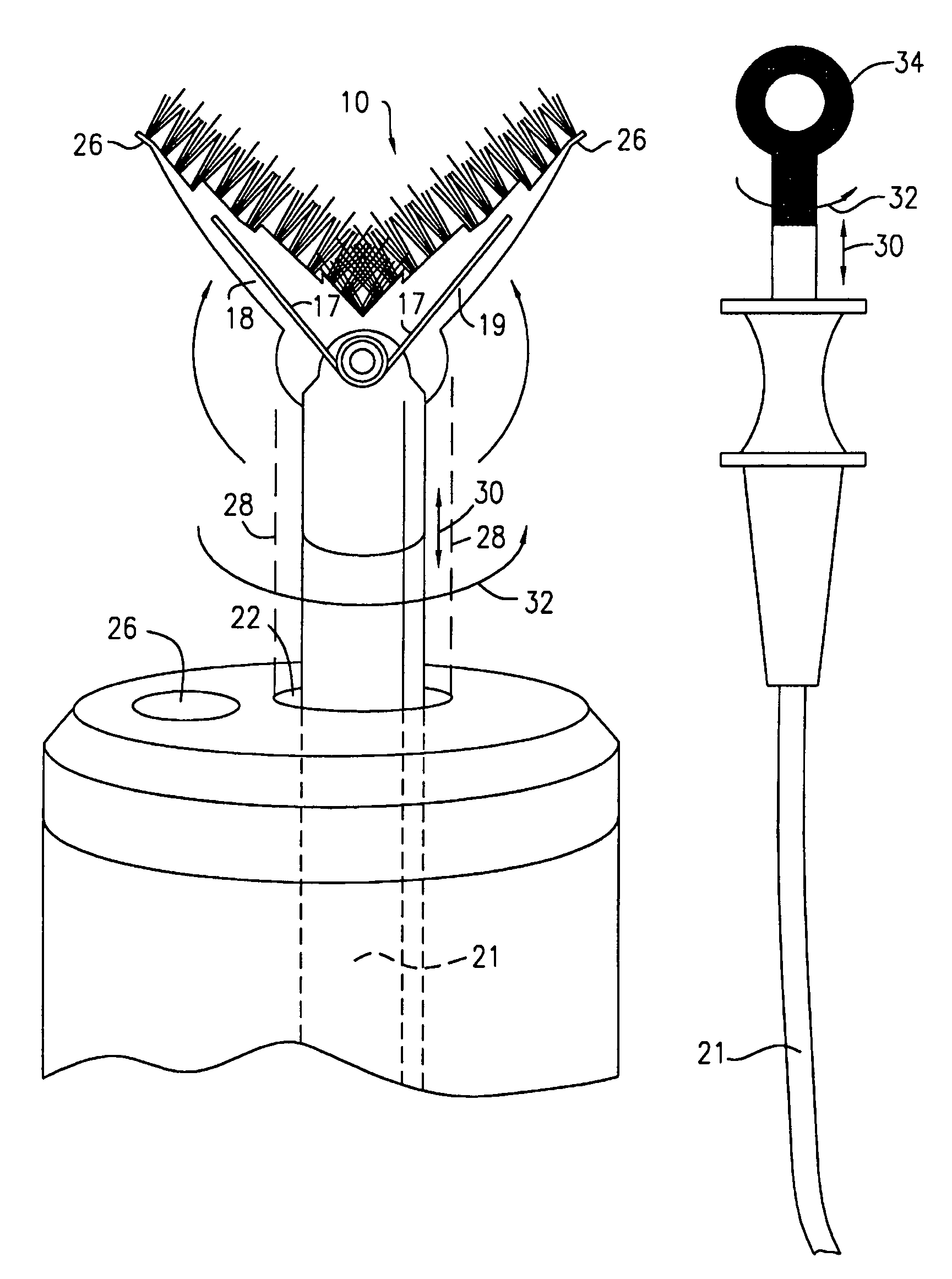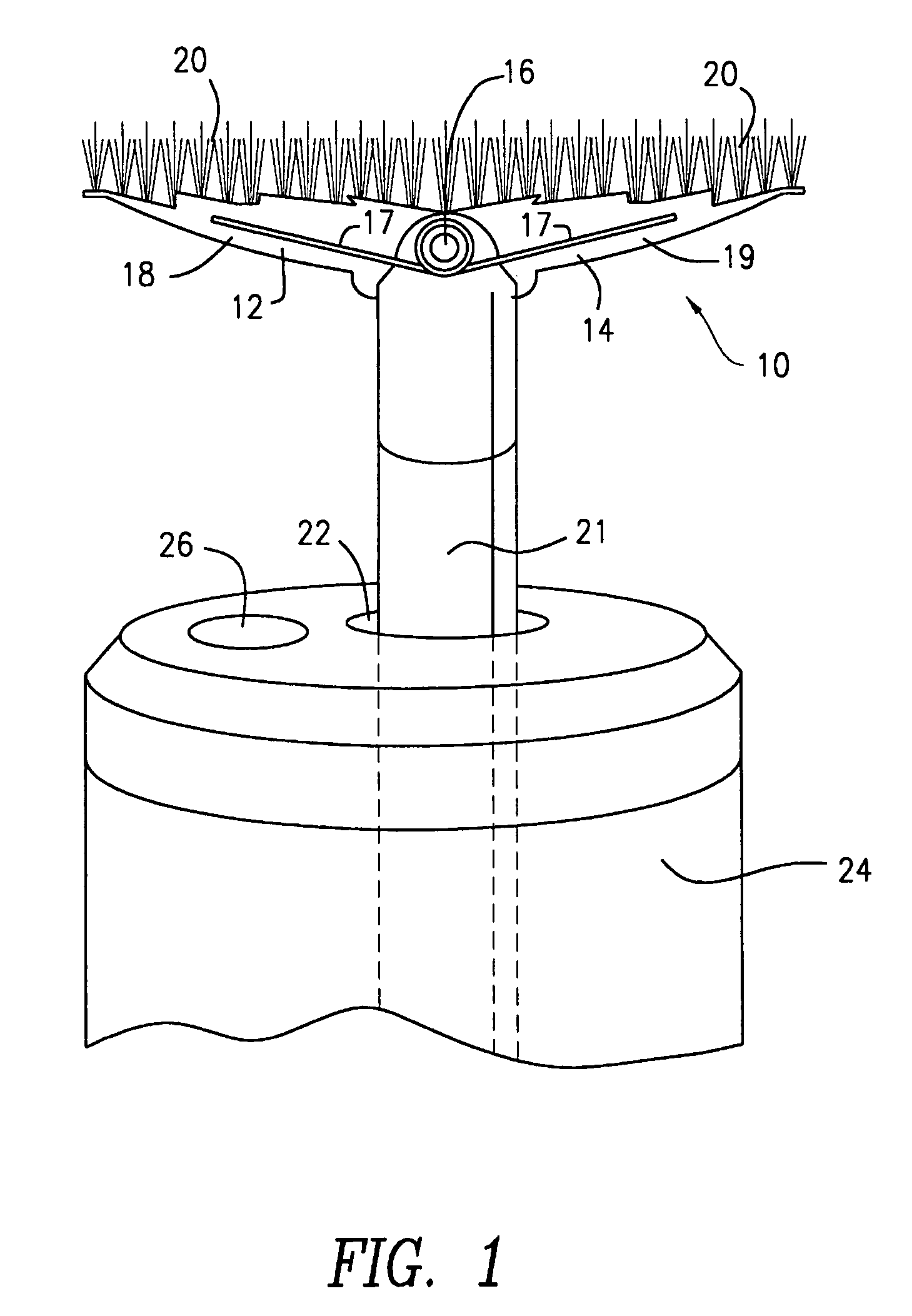Retractable brush for use with endoscope for brush biopsy
a brush biopsy and endoscope technology, applied in medical science, surgery, vaccination/ovulation diagnostics, etc., can solve the problems of ineffective treatment of patients, difficult determination of esophagus cancer, and inability to improve the mortality rate of oral cancer in the last 20 years
- Summary
- Abstract
- Description
- Claims
- Application Information
AI Technical Summary
Benefits of technology
Problems solved by technology
Method used
Image
Examples
Embodiment Construction
[0049]The prior art has used brushes with endoscopes to sample the examined area by moving the bristles of the brush across the suspect tissue area. Such brushes are similar to those described above which remove cells from the superficial layer, and the bristles do not penetrate below such layer because there is no direct force applied pushing tips of the bristles into the tissue being examined. Further, the prior art brushes merely rub against the surface and the brush area is very limited. The present retractable brush opens to a large size, the bristles thereof directly bear on said tissue transversely thereto and are urged further into said tissue by direct pressure. The brush is then rotated to sample a large area while concurrently reaching through the basement membrane to the basal cell layer.
[0050]FIG. 1 is a partial perspective and sectional view of an embodiment of this invention comprising a brush 10 formed of two separate brush sections 12 and 14 hingedly connected toget...
PUM
 Login to View More
Login to View More Abstract
Description
Claims
Application Information
 Login to View More
Login to View More - R&D
- Intellectual Property
- Life Sciences
- Materials
- Tech Scout
- Unparalleled Data Quality
- Higher Quality Content
- 60% Fewer Hallucinations
Browse by: Latest US Patents, China's latest patents, Technical Efficacy Thesaurus, Application Domain, Technology Topic, Popular Technical Reports.
© 2025 PatSnap. All rights reserved.Legal|Privacy policy|Modern Slavery Act Transparency Statement|Sitemap|About US| Contact US: help@patsnap.com



